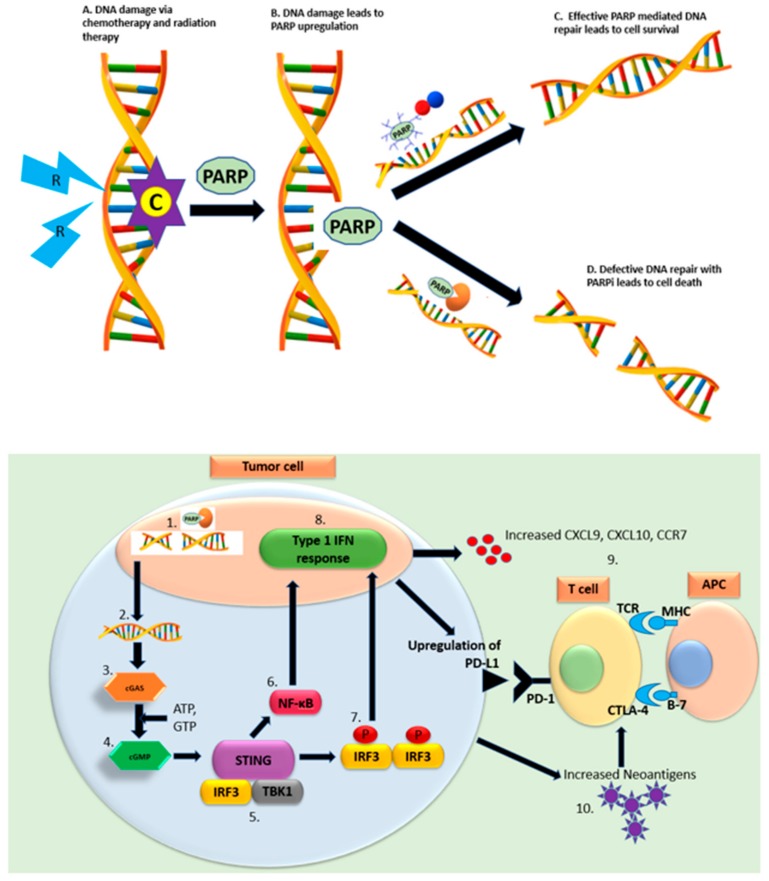Figure 2.
PARP inhibitors in combination with other therapeutics. Abbreviations: C = chemotherapy; R = radiotherapy; cGAS = cyclic GMP-AMP synthase; cGMP=cyclic guanosine monophosphate; STING = stimulator of interferon genes; IRF3 = interferon regulatory factor 3; TBK1 = TANK binding kinase 1; NF-κB = nuclear factor kappa-light-chain-enhancer of activated B cells; IFN = interferon. (Upper panel): PARP inhibitors in combination with chemotherapy and radiation therapy (A) Chemotherapy agents like platinum containing compounds and topoisomerase inhibitors and radiation therapy lead DNA damage. (B) DNA breaks lead to upregulation of PARP enzymes. (C) In normal healthy cells, PARP-1 binds to DNA damage site leading to poly ADP-ribose formation, recruitment of DNA repair proteins. This process leads to successful repair of DNA and cell survival. (D) PARPi binds to catalytic site PARP enzyme and traps PARP-1 at the NA damage site. This leads to defective DNA repair and eventually, cell death. (Lower Panel): (1) PARPi lead to double strand (ds) DNA breaks, (2) dsDNA breaks lead to generation of cytosolic DNA fragments, (3) Cytoplasmic dsDNA activates cGAS, (4) Activation of cGAS catalyzes production of cGMP, (5) cGMP activates STING pathway, (6–8) STING pathway in return activates either NF- κB or TBK1- IRF3-Type I IFN pathway. (9) Activation of Type I IFN pathway alters tumor immune microenvironment through upregulation of PDL-1 and MHC and increased CXCL9, 10, CCR7 leading to enhanced cytotoxic T cell, helper T cells and dendritic cell function. (10) Homologous recombinant deficient tumors secrete a higher neoantigen load that is associated with an increased number of tumor-infiltrating lymphocytes.

